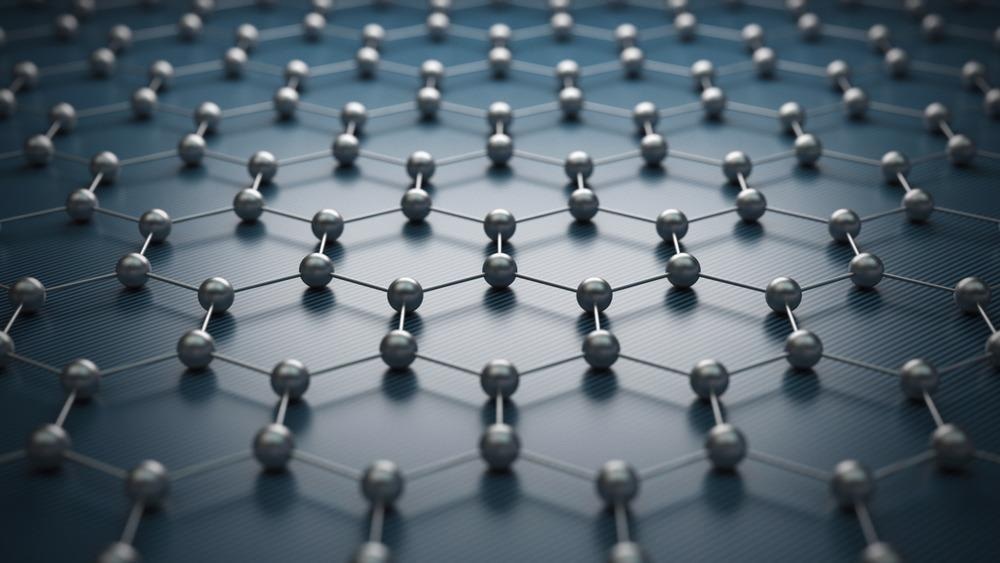
Image Credit: koya979/Shutterstock.com
Graphene is known as a 2D material. While its inherent structure and electronic properties are 2D (i.e. electrons can only travel in 2 dimensions), graphene can also be made into 3D structures.
Graphene foams have received increased interest over the years thanks to the discovery and development of Laser-Induced Graphene (LIG) by Dr James Tour from Rice University.
Graphene foams involve a carbon-rich surface being lasered to produce a 3D graphene foam. Earlier this year, Dr Tour stated that there is a very high amount of research and publication activity in LIG and graphene foams.
While graphene foams may have been attracting a lot of interest at the fundamental and academic level, they have also been attracting interest at commercial and industrial levels.
Scotland-based Integrated Graphene, which produces 3D graphene foams (and makes end-use products out of it), has announced it has raised £3.1m in its latest investment round to scale up its production potential and to demonstrate the product’s performance at larger scales.
Commercial Development of Graphene Foam
While Integrated Graphene has not specifically stated which method it is using to make the 3D graphene foam (most likely due to IP protection), it has developed an innovative process that enables high-quality graphene foams to be directly manufactured on top of a substrate (typically a plastic or foil film), at room temperature, and in a matter of seconds.
These innovative foams can be produced rapidly on various substrates, which, in turn, can be used to build specific devices. Moreover, the process itself is a single-step process and does not require the use of catalysts, binders, or additives, so you get a pure product.
Aside from direct substrate distribution at room temperatures, the graphene foam is a process that can be scaled, and it also a process that enables graphene foam properties to be customized for the intended application.
The 3D graphene foam is a more diverse form of graphene (and the graphene production method will also be) than what is commonly seen, and the graphene foam itself is said to have a large and electrochemically active surface area and a porous structure.
Integrated Graphene has currently been focusing on a couple of key application areas to start with, but there is potential for many sectors. Integrated Graphene believes that the 3D graphene foams could access a $1 trillion graphene application market. Currently, the two focus areas have been around biosensors and energy storage devices, which will be discussed in more detail below.
Graphene Foam for Biosensors
Integrated Graphene has developed a pure 3D graphene foam sensing electrode (called Gii-Sens) for point-of-need healthcare monitoring.
The sensing electrode utilizes the large electrochemically active surface area, high electrical conductivity, and pure graphene surface to provide high sensitivity.
The sensor provides a laboratory-suitable limit of detection, without amplifying processes, enzymes, or labels. The biosensing electrode can also be coupled with a specialized adaptor, which protects the sensor from the environment and performs the tests more accurately.
The Gii-Sens biosensors have also been developed further into an in-house electrochemical platform that functions as a rapid diagnostic system for several different assays.
The system is a point-of-need system that can be used to not only help develop single and multi-target microfluidic assays, but it can also be used for routine laboratory tests for these assays. Just like the Gii-Sens on their own, the platform is amplification, enzyme and label-free, has low noise and produces reproducible results.
There is a lot of effort going into the point-of-need diagnostic areas and will be something to keep an eye on in the future as they expand.
Graphene Foam for Energy Storage
Outside of the medical space, Integrated Graphene is using its 3D graphene foam within the energy storage sector to produce supercapacitors.
The 3D graphene foam supercapacitor has been named Gii-Cap and targets the electric vehicle (EV) and Internet of Things (IoT) industries.
There is a strong interest in creating energy storage graphene devices. Making them with 3D graphene foams offers an alternative solution to trialed standard options (using CVD or few-layer graphene).
The capacitors built by Integrated Graphene not only have a high capacitance and performance, but they also charge rapidly, store power for life, are non-explosive, recyclable, and are not sourced using mines or harmful materials. The supercapacitors are also customizable and have a flexible form and shape.
In a world where many people are talking about graphene energy storage, it seems that Integrated Graphene is developing an innovative approach to the status quo.
References and Further Reading
Symon, K. (2020) Tech business raises funds to develop breakthrough graphene manufacturing process. [Online] Insider. Available at: https://www.insider.co.uk/news/tech-business-raises-funds-develop-22981085
Integrated Graphene [Online] Available at: https://www.integratedgraphene.com/
Integrated Graphene. Biosensors [Online] Available at: https://www.integratedgraphene.com/biosensors
Integrated Graphene. Gii Sens Adapter [Online] Available at: https://www.integratedgraphene.com/shop/p/gii-sens-adaptor
Integrated Graphene. Energy Storage [Online] Available at: https://www.integratedgraphene.com/energy-storage
Disclaimer: The views expressed here are those of the author expressed in their private capacity and do not necessarily represent the views of AZoM.com Limited T/A AZoNetwork the owner and operator of this website. This disclaimer forms part of the Terms and conditions of use of this website.